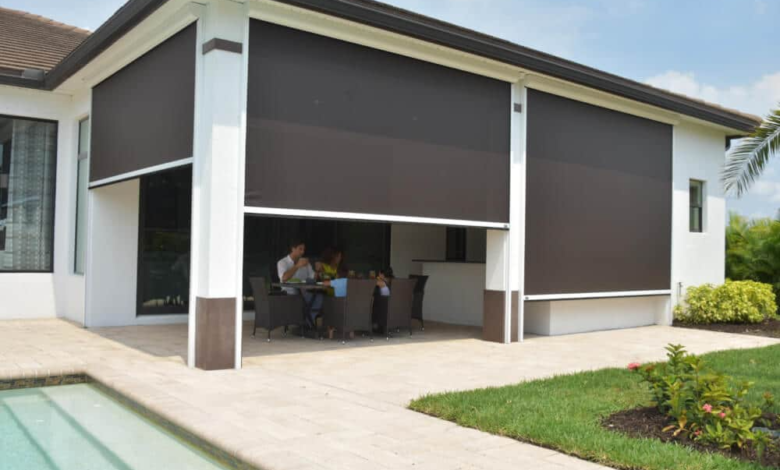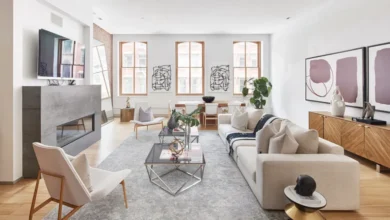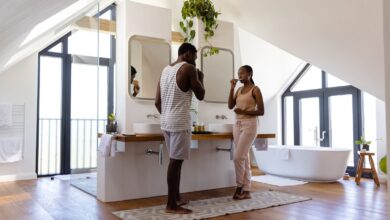Can Retractable Privacy Screens Be Installed On Windows?

Privacy is a growing concern for homeowners, especially in urban areas where houses are built close together or in ground-floor apartments facing busy streets, says Peak Residential company. Many people wonder: can retractable privacy screens be installed on windows?
Yes, retractable privacy screens can be installed on most standard residential windows. They are designed to be compatible with various window types, including single-hung, double-hung, casement, and sliding windows.
While the basic answer is yes, there’s a lot more you need to know before making a purchase. Different window styles require specific types of retractable screens, and installation methods vary significantly depending on your window configuration and frame material.
How To Choose The Right Retractable Privacy Screen For Your Windows
The first step in selecting a retractable privacy screen is identifying your window type. Single-hung and double-hung windows typically require vertical retractable screens that mount on the sides of the window frame. Casement windows, which swing outward, need specialized screens to accommodate the window’s movement. Sliding windows work best with horizontal retractable screens mounted on the top and bottom of the frame.
Frame material is another crucial consideration. Vinyl and aluminum frames often come with pre-drilled mounting points, making installation straightforward. Wooden frames require careful placement of mounting hardware to avoid compromising the frame’s integrity. Some newer windows may even have built-in channels specifically designed for retractable screens.
What Installation Methods Are Available For Retractable Privacy Screens?
Most retractable privacy screens can be installed using one of three methods: surface mounting, recessed mounting, or channel mounting. Surface mounting involves attaching the screen housing directly to the window frame’s exterior, making it the most straightforward but visible option. Recessed mounting requires cutting into the window frame to hide the screen housing, creating a cleaner look but requiring more expertise. Channel mounting uses existing screen tracks in the window frame, offering the most integrated appearance but only working with compatible windows.
Professional installation is recommended for recessed mounting, while DIY enthusiasts can typically handle surface and channel mounting with basic tools and careful attention to the manufacturer’s instructions.
What Are The Maintenance Requirements For Retractable Window Screens?
Like any mechanical system, retractable privacy screens require regular proper maintenance. The screen material should be cleaned every few months using mild soap and water, avoiding harsh chemicals that could damage the mesh. The tracking system needs periodic lubrication with silicone spray to ensure smooth operation, typically every six months.
Regular inspections can help identify potential issues before they become problems. Check for tears in the screen material, binding in the retraction mechanism, and loose mounting hardware. Most manufacturers recommend a thorough inspection and maintenance check at least once yearly, preferably before the peak usage season.
What Materials Are Available For Retractable Privacy Screens?
Retractable privacy screens come in various materials, each offering different benefits. Traditional fiberglass mesh provides basic privacy and insect protection while maintaining airflow. Solar mesh screens block UV rays and reduce heat gain, with options typically blocking 65-90% of solar heat. Tighter weave polyester or vinyl-coated materials are available for maximum privacy, though these reduce visibility and airflow more significantly.
Some manufacturers offer specialized materials like pet-resistant mesh, up to three times stronger than standard screens, or antimicrobial-treated screens ideal for humid climates. The material choice often affects the price, with specialized options costing 30-50% more than standard mesh screens.
How Much Do Retractable Privacy Screens Cost And Are They Worth The Investment?
The cost of retractable privacy screens varies significantly based on size, material, and installation method. Basic models typically range from $100-300 per window for DIY installation, while premium systems with professional installation can cost $300-800 per window. Custom sizes or specialized materials may increase costs further.
Despite the initial investment, retractable screens often prove cost-effective over time. They can reduce energy bills by blocking solar heat gain in summer, saving 5-15% on cooling costs. Their ability to retract when not needed also means less wear and tear than fixed screens, potentially lasting 10-15 years with proper maintenance. Additionally, they can increase home value by improving functionality and aesthetic appeal, with real estate professionals noting that quality window treatments typically offer a 50-80% return on investment at resale.
Financially, the break-even point for energy savings typically occurs within 3-5 years, making retractable privacy screens a worthwhile investment for most homeowners planning to stay in their homes long-term.
Taking The Next Step
Before purchasing retractable privacy screens, measure your windows and photograph your window frames from multiple angles, both inside and out. Having these details ready when you contact suppliers or installers will help ensure you get accurate quotes and appropriate recommendations for your specific situation, saving you time and potentially avoiding costly mistakes in the selection process.




